aaaa
Freakish Animals That Want To Kill You
We all know that sharks, crocodiles, bears and Hannibal Lecter eat people. But what about those hidden
threats, those ones we’re not aware of? Maybe it’s because we don’t suspect them or maybe it’s because
they’re just that damn good at what they do, but trust me, these things want you dead.
Anglerfish
Quite recognizable as being the stereotypical “freaky fish” of the darkest depths of the ocean, the Anglerfish is the stuff of nightmares. Using the glowing “lure” mounted on its head; the Anglerfish entices prey to touch it, triggering an automatic reflex in the jaws, devouring it whole. The teeth of the Anglerfish fold back, allowing food to glide past them with the greatest of ease and is further helped by the fact that the Anglerfish may also alter the size of its jaws and stomach, allowing the consumption of prey twice its size.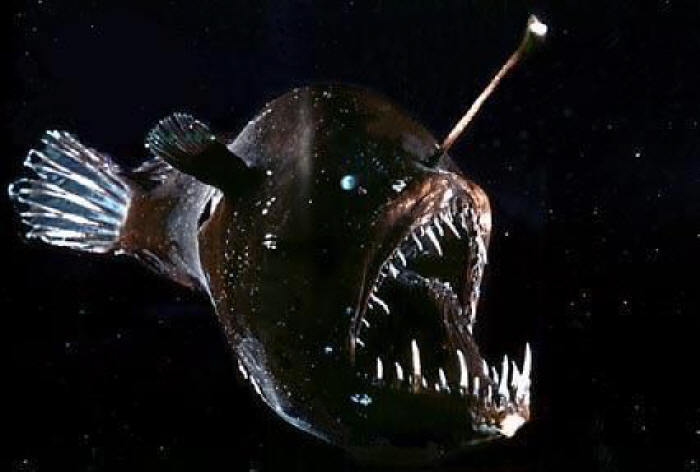
Aye-aye
Living primarily on the east coast of Madagascar, the Aye-aye is the world’s largest nocturnal primate, sleeping in nests made in trees during the day. It searches for food by tapping on trees in order to find delicious grubs to eat; it will then pull the grubs from the tree with help from its elongated middle finger. Unfortunately, its appearance isn’t as hilarious as its somewhat comical name might suggest, as the Aye-aye is in possession of unpleasant looking crooked fingers (for grub-catching) and eyes that want to destroy you.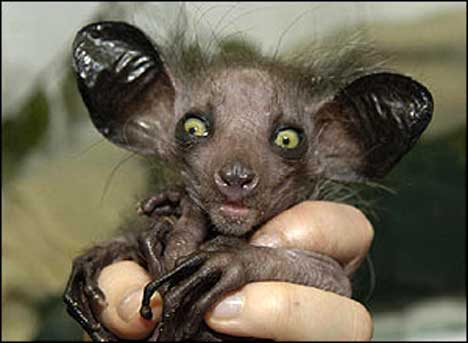
Axolotl

Sure, the Axolotl – a variety of mole salamander that can only be found in lakes Xochimilco and Chalco in central Mexico – might look like its smiling at you. Sure, it might even have a Pokémon designed after it. But all it really wants is to hollow out your skull and build its own Infernal Throne.
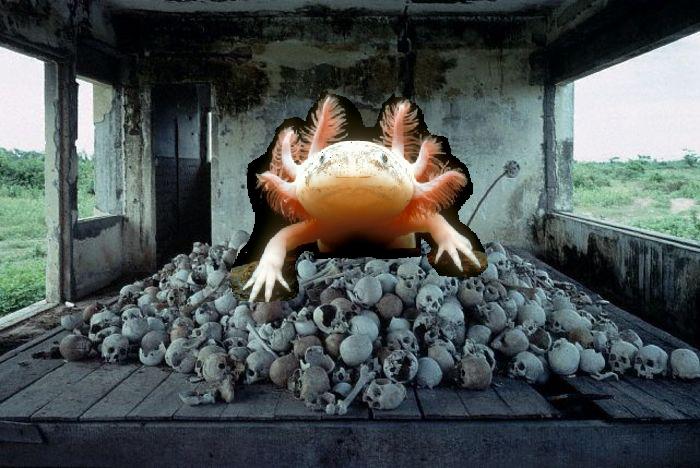
Blobfish
An unhappy looking “fish” that inhabits depths just off the coasts of Tasmania and Australia, it basically is a gelatinous mass, with a density just a bit less than water, which allows it to float around as it pleases, eating any little bits of edible matter that it runs into. It also demands human sacrifice.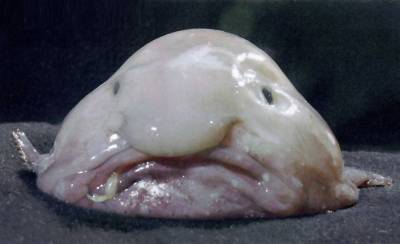
Fangtooth Fish
Commonly found the world over and in both tropical and cold waters, the Fangtooth’s name gives away its appearance, namely that of fangs and teeth. Whilst small and therefore of no danger to us humans, it still looks terrifying and purportedly has the largest teeth of any fish, in proportion to its body size. If it was bigger, it would most likely enjoy feasting on your face.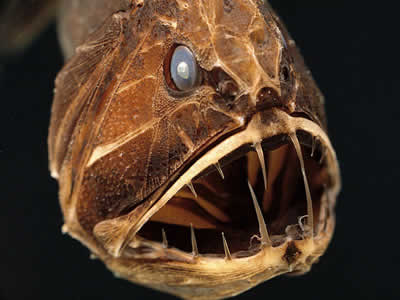
Hagfish
Rapidly gaining a reputation as being one of the most “disgusting” sea creatures and commonly referred to as “slime eels” for their propensity to produce vast quantities of slime/mucus , which acts as a defense mechanism (Hagfish can secrete enough slime to fill a twenty liter bucket in a few minutes) and generally looks disgusting. Hagfish are also known for their horrific feeding habits, not only extensively feeding on dead and rotten matter, but they are known to dig inside their prey and eat it from the inside out, bursting forth from the desiccated corpse of the creature like something from so many Science Fiction movies.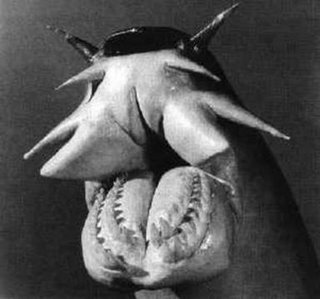
Lamprey
Known primarily for its hideous mouth, which is also the subject of many very disturbing photoshops. The lamprey is a parasitic marine animal and has been known to suck the blood of other fish and are considered to be a pest in most parts of the world.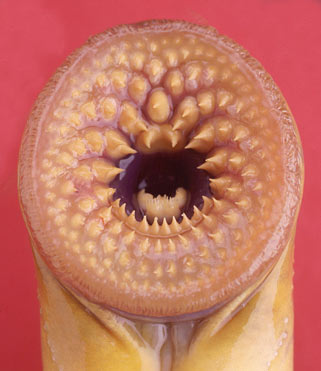
Lumpfish
Lumpfish are typically found in cold water, such as the Arctic and the North Atlantic oceans and similar to the aforementioned Blobfish in that they spend a lot of time on/near the ocean floor, sucking up any food that comes their way. While it looks like a boglin reject, one images that it wasn’t as much fun to play with.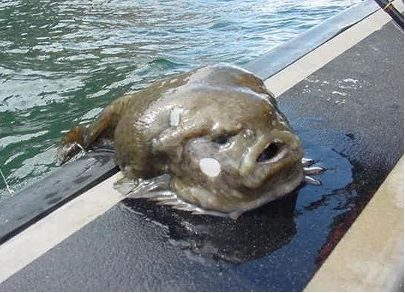
Pygmy Marmoset
Native to the rainforests of Brazil, Ecuador and Peru, the pygmy marmoset is widely seen as the smallest monkey in the world, being 14-16cm in length. They eat most things, such as fruit, insects and leaves, but we know that – just as with all monkeys – if it were a bit bigger, it would probably eat you and your family.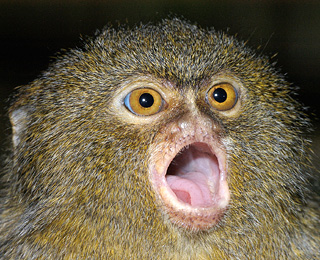
Red panda
Native to some parts of the Himalayas as well as India, Pakistan, Nepal and China, there are very few of these endangered animals left thanks to things like deforestation and farming driving them from their natural habitats. The Red Panda – also known as Firefox – has a diet that consists mainly of bamboo, but they also eat acorns, roots, berries, and have been known to – dear God, look at its eyes!
Star-Nosed Mole
Surfacing from the ground with what resembles a shotgun-splattered zombie face and into your nightmares, the star-nosed mole is commonly found in the north-eastern parts of the US and some parts of eastern Canada and its diet consists of aquatic insects, worms and other tiny moving things. The nose is its defining feature and is – of course – incredibly sensitive, giving the otherwise blind mole its means of actively identifying where and what its next meal is and if said meal is actually edible in the first place. The nose may also be used to smell underwater and as it burrows into your skull to feast on your brains.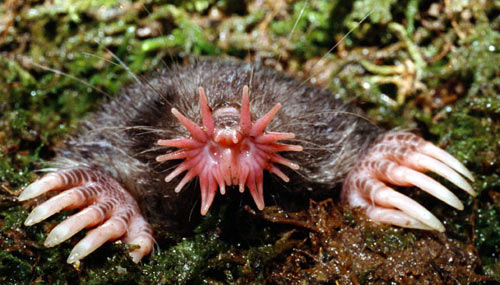
Tarsier
They say that the eyes are the windows to the soul and in this case it is quite evident that the tarsier has no soul, so it is coming after yours. A primate living mainly in the islands of Southeast Asia, the tarsier is well-known for its large eyes, with each eye being roughly the same size as its entire brain. Feasting primarily on insects, the tarsier is a nocturnal creature by nature, presumably because it’s easier to catch souls while it’s dark.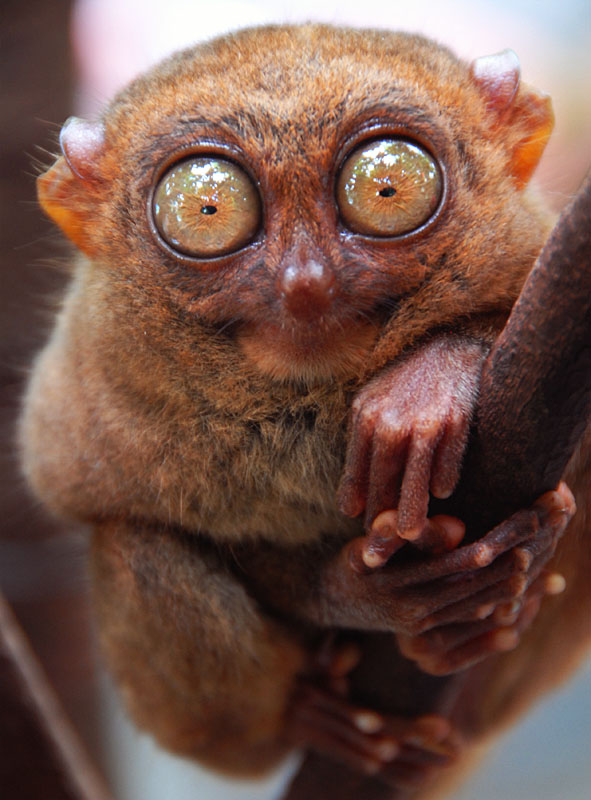
Vampire Squid
The Vampire Squid, or Vampyroteuthis infernalis (which literally translates as “vampire squid from hell”), is another inhabitant of the deep sea, usually found in temperate and tropical oceans and was actually incorrectly identified as an octopus when it was first spotted. Despite its fearsome appearance, the Vampire Squid feeds mainly on small crustaceans such as copepods and prawns, but it would probably envelop your head and feed on that if it could.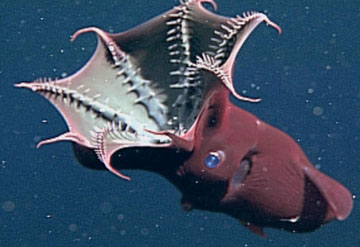
Yeti Crab
Only recently discovered in the South Pacific Ocean in 2005, its Latin name is Kiwa hirsuta, with hirsuta meaning “hairy”. Due to its bizarre appearance, it is repeatedly called a “furry lobster” outside of the scientific community. Little is solidly known about the 6 inch long monstrosity with hairy arms, but it is thought to feed upon algae, shrimp and quite possibly your dog.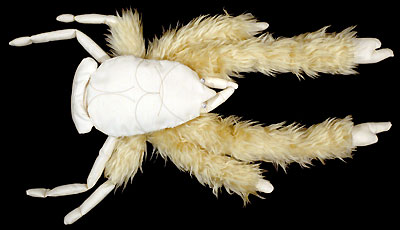
© 2009 Cricket Traveling LTD. All rights reserved. No part of this site may be reproduced
without our written permission.
